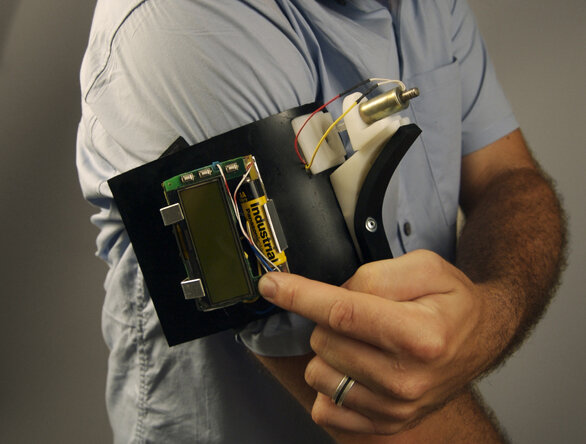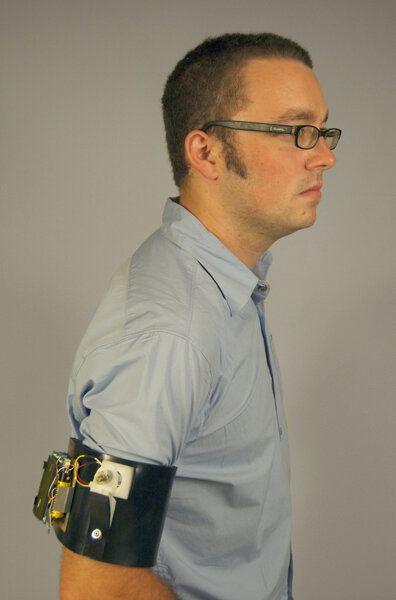I.E.D (Improvised Empathetic Device)
I.E.D (Improvised Empathetic Device)
The United States-led war in Iraq has resulted in an enormous number of human casualties. While the number of Iraqi deaths is unreported and therefore vague, an exact account of U.S. military deaths is broadcast through widely available sources. Many are these deaths are the result of improvised explosive devices, commonly abbreviated as I.E.D.s. Coverage of these atrocities, meanwhile, is often overshadowed in the popular news media by more personal and spectacular stories. These stories, which grace runaway brides and jailed heiresses with primetime coverage, have little bearing or reflection of the experiences of the war itself.
I.E.D. is a wearable device that prompts awareness of the death and violence in the Middle East by creating physical pain in correspondence to reports of killed American soldiers. In I.E.D., a software application continuously monitors the website, www.icasualties.org. This site updates the personal details and numbers of slain U.S. soldiers as they are released by the US government. When news of American deaths are reported on the website, the data is sent wirelessly to custom hardware installed on the I.E.D. armband. The LCD readout displays the soldier’s name, rank, cause of death and location, and then triggers an electric solenoid to drive a needle into the wearer’s arm. The needle draws blood, calling immediate attention to a soldier has just died in the Iraq war.
In I.E.D., the medical concept of bio-telemetry—the remote monitoring of a patient’s vital signs—is inverted. Rather than receiving a read-out of various vital metrics, the physical pain that is transmitted and ultimately experienced by the wearer is a proxy for a much more severe form of injury. Yet, as initial demonstrations of the armband revealed, I.E.D. also served as an indicator of the political strength of the presiding administration and the favorability of the war effort. As the American death toll mounted, casualty figures were released once a week on Friday afternoons—a practice aimed at burying politically troublesome information within the unread pages of Saturday’s news. To this end, I.E.D. confronts a disconcerting arrangement between media and governance in which the deaths of American soldiers are not considered newsworthy.
Exhibitions: Human + , Science Gallery, Dublin. MyWAR, Agnes Etherington Art Centre, Canada. MyWAR, The Edith Russ Site for Media Art, Oldenburg, Germany. DIMEA Exhibition, International Conference on Digital Interactive Media Entertainment & Arts, Bangkok. Human+, ArtScience Museum, Singapore.Global Eyes, SIGGRAPH Art Gallery, San Diego, Ca.



